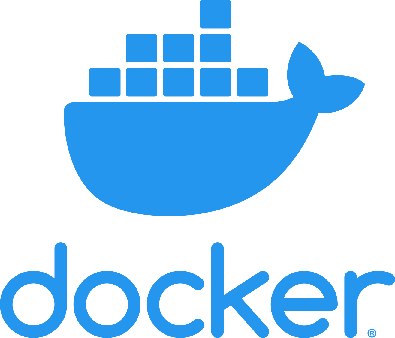Openshift를 설치해서 공부하려니 리눅스 머신에 직접 설치하는건 너무 번거롭고 힘든 일이더군요. Vagrant 버전을 찾아보니, 이는 Minishift라는 것으로 대체된 것을 알게 됐습니다. 설치 중 약간의 문제(아래에 나옵니다)가 있었지만, 사용해 보니 편하게 Openshift를 시작할 수 있는 방법입니다. 윈도 환경에서 설치/사용하는 방법을 소개합니다.
설치
아래가 홈페이지입니다.
https://www.openshift.org/minishift/
다운로드를 하려면 release 페이지로 가서 받으면 됩니다. 현재 v1.3.1이 최신이군요.
https://github.com/minishift/minishift/releases
윈도 64비트 버전(minishift-1.3.1-windows-amd64.zip)을 받습니다.
윈도 버전에는 문제가 조금 있어서 사용자의 홈 디렉토리가 있는 드라이브에 설치를 해야합니다.
C:\minishift 폴더를 만들고 이곳에 위에서 받은 압축 파일의 내용물을 넣습니다.
이제 명령 프롬프트를 실행한 후 위 폴더로 이동한 후 아래 명령으로 Minishift를 실행합니다.
minishift.exe start --vm-driver virtualbox
윈도 버전의 경우 Hyper-V를 하이퍼바이저로 사용하는게 기본인데, 저는 VirtualBox를 사용했습니다. 물론 VirtualBox를 먼저 설치해야겠지요. 최신 버전(v5.1.12 이상)을 사용해 주세요.
아래는 설치 로그인데 중간에 다운로드를 강제 종료하는 부분이 있습니다. 저만 그런지는 모르겠는데 이렇게 하지 않으면 ISO 파일을 받다가 The process cannot access the file because it is being used by another process.. Retrying. 라는 오류를 내면서 더 이상 진행이 안되더군요.
C:\WINDOWS\system32> cd C:\minishift
C:\minishift>
C:\minishift>
C:\minishift> minishift.exe start --vm-driver virtualbox
-- Installing default add-ons ... OK
Starting local OpenShift cluster using 'virtualbox' hypervisor...
Downloading ISO 'https://github.com/minishift/minishift-b2d-iso/releases/download/v1.0.2/minishift-b2d.iso'
84.57 KiB / 40.00 MiB [>---------------------------------------------------------------------------------------------------------------------------------------------------------------------------------------------------] 0.21% 14m32s
# 여기에서 다운로드를 강제 종료
# 시작 명령어 다시 실행
C:\minishift> minishift start --vm-driver virtualbox
Starting local OpenShift cluster using 'virtualbox' hypervisor...
Downloading OpenShift binary 'oc' version 'v1.5.1'
19.05 MiB / 19.05 MiB [========================================================================================================================================================================================================] 100.00% 0s
-- Checking OpenShift client ... OK
-- Checking Docker client ... OK
-- Checking Docker version ... OK
-- Checking for existing OpenShift container ... OK
-- Checking for openshift/origin:v1.5.1 image ...
Pulling image openshift/origin:v1.5.1
Pulled 0/3 layers, 3% complete
Pulled 0/3 layers, 74% complete
Pulled 1/3 layers, 88% complete
Pulled 2/3 layers, 90% complete
Pulled 3/3 layers, 100% complete
Extracting
Image pull complete
-- Checking Docker daemon configuration ... OK
-- Checking for available ports ... OK
-- Checking type of volume mount ...
Using Docker shared volumes for OpenShift volumes
-- Creating host directories ... OK
-- Finding server IP ...
Using 192.168.99.100 as the server IP
-- Starting OpenShift container ...
Creating initial OpenShift configuration
Starting OpenShift using container 'origin'
Waiting for API server to start listening
OpenShift server started
-- Adding default OAuthClient redirect URIs ... OK
-- Installing registry ... OK
-- Installing router ... OK
-- Importing image streams ... OK
-- Importing templates ... OK
-- Login to server ... OK
-- Creating initial project "myproject" ... OK
-- Removing temporary directory ... OK
-- Checking container networking ... OK
-- Server Information ...
OpenShift server started.
The server is accessible via web console at:
https://192.168.99.100:8443
You are logged in as:
User: developer
Password: developer
To login as administrator:
oc login -u system:admin
다운로드를 CTRL+C로 강제 종료한 후 https://github.com/minishift/minishift-b2d-iso/releases/download/v1.0.2/minishift-b2d.iso 파일을 받아서 C:\Users\사용자명\.minishift\cache\iso\ 폴더에 직접 넣어줍니다. 그리고 cache 디렉토리를 제외한 C:\Users\daniel\.minishift\ 디렉토리의 하위 디렉토리를 모두 지웁니다. 이렇게 한 후에 다시 시작 명령을 실행합니다.
minishift.exe start --vm-driver virtualbox
IP나 로그인 정보 등이 나오면서 실행이 완료되면 아래와 같이 몇몇 명령어를 실행해 봅니다.
C:\minishift>minishift ip
192.168.99.100
C:\minishift>minishift status
Running
OC(OpenShift Client Binary) 사용
minishift oc-env 명령을 실행하면, oc를 사용하기 위한 설정 명령어를 출력합니다. 윈도의 경우 출력의 마지막 줄에서 REM을 제거한 텍스트를 실행하면 됩니다.
@FOR /f "tokens=*" %i IN ('minishift oc-env') DO @call %i
아래는 위의 명령을 실행해서 oc를 사용 가능하게 만든 후, oc status를 사용하는 예입니다.
C:\minishift>minishift oc-env
SET PATH=C:\Users\daniel\.minishift\cache\oc\v1.5.1;%PATH%
REM Run this command to configure your shell:
REM @FOR /f "tokens=*" %i IN ('minishift oc-env') DO @call %i
C:\minishift>oc status
'oc'은(는) 내부 또는 외부 명령, 실행할 수 있는 프로그램, 또는
배치 파일이 아닙니다.
C:\minishift>@FOR /f "tokens=*" %i IN ('minishift oc-env') DO @call %i
C:\minishift>oc status
In project My Project (myproject) on server https://192.168.99.100:8443
You have no services, deployment configs, or build configs.
Run 'oc new-app' to create an application.
샘플 애플리케이션 배포
oc new-app 명령을 이용해서 새로운 애플리케이션을 만들고 배포할 수 있습니다. 아래는 GitHub에서 소스를 가져와서 배포하는 명령과 그 실행의 예입니다. -l 옵션은 labels를 의미합니다. name 레이블을 붙이고 값으로 myapp을 사용했습니다.
oc new-app https://github.com/openshift/nodejs-ex -l name=myapp
C:\minishift>oc new-app https://github.com/openshift/nodejs-ex -l name=myapp
--> Found image ccdf360 (2 days old) in image stream "openshift/nodejs" under tag "4" for "nodejs"
Node.js 4
---------
Node.js 4 available as docker container is a base platform for building and running various Node.js 4 applications and frameworks. Node.js is a platform built on Chrome's JavaScript runtime for easily building fast, scalable network applications. Node.js uses an event-driven, non-blocking I/O model that makes it lightweight and efficient, perfect for data-intensive real-time applications that run across distributed devices.
Tags: builder, nodejs, nodejs4
* The source repository appears to match: nodejs
* A source build using source code from https://github.com/openshift/nodejs-ex will be created
* The resulting image will be pushed to image stream "nodejs-ex:latest"
* Use 'start-build' to trigger a new build
* WARNING: this source repository may require credentials.
Create a secret with your git credentials and use 'set build-secret' to assign it to the build config.
* This image will be deployed in deployment config "nodejs-ex"
* Port 8080/tcp will be load balanced by service "nodejs-ex"
* Other containers can access this service through the hostname "nodejs-ex"
--> Creating resources with label name=myapp ...
imagestream "nodejs-ex" created
buildconfig "nodejs-ex" created
deploymentconfig "nodejs-ex" created
service "nodejs-ex" created
--> Success
Build scheduled, use 'oc logs -f bc/nodejs-ex' to track its progress.
Run 'oc status' to view your app.
C:\minishift>oc status
In project My Project (myproject) on server https://192.168.99.100:8443
svc/nodejs-ex - 172.30.43.241:8080
dc/nodejs-ex deploys istag/nodejs-ex:latest <-
bc/nodejs-ex source builds https://github.com/openshift/nodejs-ex on openshift/nodejs:4
deployment #1 deployed 8 minutes ago - 1 pod
View details with 'oc describe <resource>/<name>' or list everything with 'oc get all'.
설치 단계의 로그에서 알려주듯이 developer 계정으로 이미 로그인이 된 상태이기 때문에, developer 계정에 애플리케이션이 생성되었습니다. 콘솔에 로그인하여 UI로 확인할 수 있습니다.
https://192.168.99.100:8443에 브라우저로 접속한 후, developer 계정으로 로그인합니다. 암호는 동일합니다.

My Project를 클릭하여 이동합니다. My Project는 OpenShift가 자동으로 만드는 기본 프로젝트입니다.

#1 링크를 클릭하면 name 레이블이 myapp인 것을 확인할 수 있습니다.

Route 생성
Applications > Pods 메뉴로 이동하여 애플리케이션 Status가 Running으로 변경된 것을 확인한 후, Router를 만들면 브라우저에서 직접 화면을 볼 수 있습니다. Applications > Services 메뉴로 이동한 후 nodejs-ex 서비스를 클릭합니다. Actions > Create Route 메뉴나 Create route 링크를 클릭하여 Route 생성 화면으로 이동합니다.

현재 서비스가 하나 밖에 없고 Hostname은 입력하지 않으면 자동 생성되기 때문에 바로 Create 버튼을 클릭해서 Route를 생성합니다.

Traffic 영역의 표에서 Hostname을 클릭합니다.

드디어 배포한 애플리케이션의 화면을 볼 수 있습니다.

oc로는 아래와 같이 하면, 위와 같게 Route를 생성할 수 있습니다.
C:\minishift>oc expose svc/nodejs-ex
route "nodejs-ex" exposed
Minishift의 종료
아래와 같이 minishift stop 명령으로 종료합니다.
C:\minishift>minishift stop
EOF















